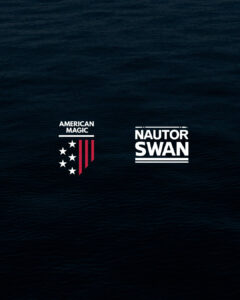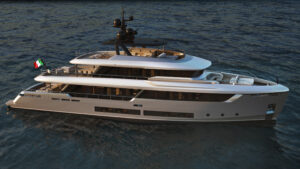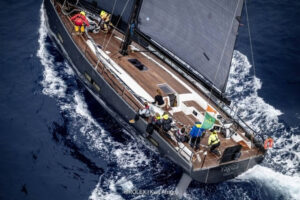PUMA IN CONTROL AS FLEET APPROACHES DOLDRUMS
After continuing their charge south in good winds and at high speeds, Ken Read’s crew on PUMA Ocean Racing powered by BERG have taken the lead in the 6,500 nautical mile first leg of the Volvo Ocean Race 2011-12 to Cape Town, South Africa.
Averaging around 22 -knots in the fresh conditions, the American team blew past long-time leader, Franck Cammas’ Groupama sailing team last night and at the 0400 UTC position report this morning they held an almost 16 nautical mile advantage over Iker Martínez on Team Telefónica, who had also slid past Groupama in the night.
Groupama held on to third place for a while, but with the French crew drifting along at less than five-knots for long periods, it was inevitable that they were soon overtaken by Chris Nicholson’s CAMPER with Emirates Team New Zealand who had been averaging over 15 -knots.
Once in first place, PUMA rammed home the advantage, extending their lead over CAMPER and Groupama at every position update, with only Telefónica able to hang on to their coat tails.
On board PUMA the mood was understandably upbeat, but as Media Crew Member Amory Ross explained, there was also a degree of caution about leading the fleet into the capricious Doldrums — a traditionally windless zone which has the potential to turn the standings upside down.
“We are absolutely trucking south. Each new sched brings good progress on Groupama far to the east and we’ve been ever so slowly edging out on Telefónica and CAMPER to our north.
“It’s a dangerous game being the lead dog as we’re the ones to encounter new weather first. Unfortunately in this case that new weather is what we all call the Doldrums and it’s a land of fickle wind.
“So while we’re happy going fast and leading the charge to Cape Town, everyone’s aware that in a few days time this ride comes to an end. It’s still anyone’s guess as to what happens then!”
Despite dropping from first to fourth so quickly, Groupama 4 skipper, Franck Cammas took a pragmatic view of the situation and, with almost 5,000 miles to run, was far from ready to concede the leg. “The outcome won’t be very positive, that’s for sure. That’s the risk of our option. We knew it would be favourable in the short term. It was uncertain on the long term and it didn’t come out very good for us. ”We will fight to avoid losing too much compared with them. We certainly can lose 100 to 200 miles but it’s still in a few days and many things can happen in the Doldrums.
“A few knots more and an interesting angle can help us. And in a few days we will get the same wind as our competitors.”
After more than a week of hard work and close quarters living for all four crews, conditions on board the boats are becoming unpleasant in the warmer temperatures as the boats approach the Equator.
“Inside the boat it’s starting to get hot and you can tell,” Team Telefónica Media Crew Member Diego Fructuoso wrote in his report from the boat.
“We’re sweating more and smelling worse (if that’s possible). I don’t know what it’s going to be like when we’re at the equator!
“When someone comes off watch and takes off their boots you cannot imagine the smell that comes off. I notice it more too because I spend more time inside the boat.”
On CAMPER, tactician Will Oxley was eying an upcoming opportunity to close the gap on the fleet as the windless Doldrums zone approached on the way to the turning mark at Fernando de Noronha.
“As we sail south, a new Azores high pressure system (when this is in position the trade winds reestablish) is moving in behind us. This means its likely that there will be some compression of the fleet as we move south as the boats further south will have less wind.
“History tells us that west is best for a passage of the doldrums however once through the doldrums a boat in the west has to sail finer, tighter angles to Fernando and the boats slightly to their east are able to put the bow down and go faster.
“PUMA and Telefónica both have a very healthy lead over us at present. Our sole aim is to reduce that deficit as much as possible by Fernando to give us a chance of overtaking them in the south Atlantic.”
“There is still a long way to go in this leg.”
At 1300 UTC and with more than 1,000 nautical miles to sail until the turning mark at Fernando de Noronha, PUMA held a 16 nautical mile advantage over second placed Telefónica.
CAMPER were third, a further 120 nautical miles behind, with Groupama trailing in fourth another 27 nautical miles adrift.


